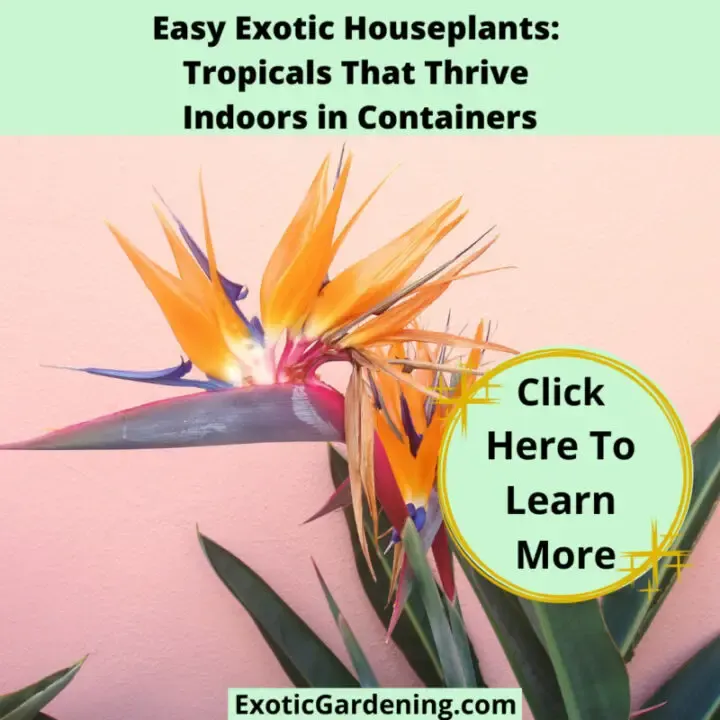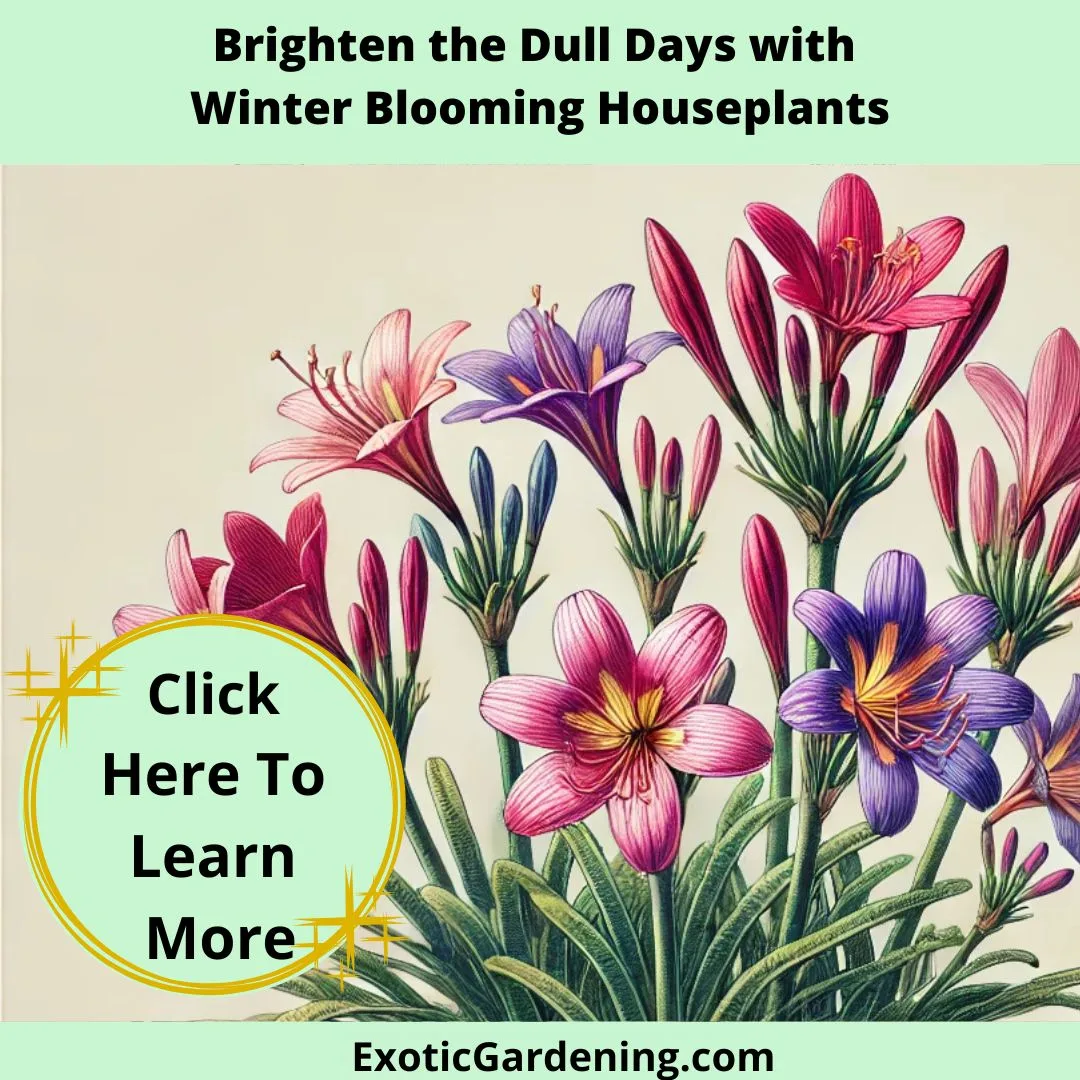How to grow spider plants is a question I get asked often, and for good reason!
Spider plants are a popular choice for both novice and seasoned plant enthusiasts.
Their easy-going nature and vibrant foliage make them a delightful addition to any home.
Whether you're just starting out with indoor gardening or you're looking to expand your plant collection, spider plants are a fantastic option.
In this guide, we'll cover everything you need to know about keeping your spider plant healthy and thriving—from ideal lighting conditions to proper watering techniques and even how to propagate those adorable little "spiderettes" that dangle from mature plants.
Spider Plant Light Requirements
Spider plants thrive in bright, indirect sunlight, making them a perfect choice for those sunny spots in your home where the light isn’t too harsh.
They absolutely love filtered light—think of the gentle rays passing through a sheer curtain.
Direct sunlight, however, can be a bit too intense and may scorch their beautiful leaves, so you’ll want to avoid placing them in those hot, sun-drenched spots.
I’ve found windows facing north, east, or even west work best for spider plants, as they get that soft, indirect light they crave.
Now, here’s the great thing—spider plants are pretty forgiving when it comes to light.
They can tolerate lower light conditions, though you might notice their growth slowing down a bit.
If you have a variegated variety, the bright stripes might fade a little in lower light, but don’t worry!
You can always supplement with a grow light if natural light is limited, and they’ll perk right back up.
Watering Spider Plants
Spider plants like a good balance when it comes to watering—not too much, and not too little.
The key is to keep the soil moderately moist, but not soggy.
I usually wait until the top inch of soil dries out before giving them a drink.
Overwatering is one of the most common issues, and it can lead to root rot.
If you start seeing yellowing leaves, that might be your plant’s way of telling you it’s had too much water.
How often you water really depends on your home’s climate and the season.
As a general rule, watering once a week should be just right, but always check the soil first.
If your tap water has a lot of chlorine or fluoride, you might notice the tips of the leaves turning brown.
In that case, try switching to distilled or rainwater to keep them looking fresh.
When you do water, make sure to water thoroughly until it runs out of the bottom of the pot.
Don’t leave your plant sitting in standing water because that can lead to problems down the road.
Take the Guesswork Out of Growing Spider Plants!

Struggling to keep your spider plant looking lush and vibrant? Between figuring out when to water, how much sunlight it needs, and how to tackle pests, it’s easy to feel overwhelmed. That’s why I created the Spider Plant Care Planner—the perfect tool for plant lovers who want healthier, thriving plants without all the stress.
- Track watering schedules, sunlight exposure, and pest prevention.
- Get seasonal care tips specific to spider plants (yes, they have different needs in summer and winter!).
- Keep things organized with an easy-to-use format designed for busy lifestyles.
Whether you’re a beginner or a seasoned plant parent, this planner will help you grow beautiful spider plants with confidence. Plus, for a limited time, you can snag it at $3.00. Don’t miss out—your spider plant will thank you!
Choosing the Right Soil for Your Spider Plant
When it comes to soil, spider plants aren’t too fussy, but they do need a well-draining potting mix to really thrive.
A high-quality indoor potting mix like Fox Farm Happy Frog or Ocean Forest Potting Mix is perfect—it provides the right balance of nutrients and drainage that your spider plant will love.
One thing I always recommend is making sure your pot has drainage holes.
This is crucial to prevent water from building up and causing root rot.
If you’re using a decorative pot without holes, no worries—you can double-pot your plant.
Simply place the spider plant in a plastic nursery pot with drainage holes, then set that inside your decorative pot.
It’s an easy way to enjoy the look of your favorite pots while still keeping your plant happy.
Over time, soil can start to get compacted, which limits airflow to the roots.
To keep things nice and airy, I like to mix in a bit of perlite or even orchid bark now and then.
It helps with aeration and drainage, ensuring your spider plant stays healthy and vibrant.
Keeping the Right Temperature and Humidity for Your Spider Plant
Spider plants are pretty easygoing when it comes to temperature—they prefer a range of 60-75°F (15-24°C), which is perfect for most homes.
Just be mindful to keep them away from drafts or sudden temperature changes, like near a frequently opened door or window.
While spider plants can adapt to the average humidity levels in your home, they’ll really appreciate it if you bump up the humidity just a bit.
There are a few simple ways to do this.
You can mist them occasionally, use a small humidifier nearby, or even group your plants together to create a more humid microenvironment.
Kitchens and bathrooms are also great spots for spider plants since they naturally have higher humidity.
If you notice the tips of the leaves turning brown and crispy, that’s often a sign that the humidity is too low.
Taking steps to increase the moisture in the air can help keep your spider plant looking lush and healthy.
Fertilizing Your Spider Plant
Spider plants are relatively low-maintenance, but they do enjoy a little extra nourishment during their active growing season, which is in the spring and summer.
I like to fertilize mine every two to four weeks using a balanced fertilizer, like Dr. Earth Organic & Natural Pump & Grow Liquid Plant Food.
If you choose to use a water soluble fertilizer be sure to dilute it according to the package instructions—you don’t want to overwhelm your plant with too much of a good thing.
Once fall and winter roll around and growth slows down, you can cut back on fertilizing to about once a month.
The plant doesn’t need as much during its resting phase.
Be careful not to over-fertilize, though!
Too much can cause salt build-up in the soil, and you’ll start to see brown leaf tips as a warning sign.
When in doubt, it's always safer to under-fertilize rather than risk harming your spider plant.
Easy Ways to Propagate Your Spider Plant
One of the best things about spider plants is how easily they produce adorable little "baby spiders" or plantlets, which are super simple to propagate.
These plantlets often start developing tiny roots while still attached to the parent plant, making the whole process even easier.
Here are a couple of ways you can propagate them:
- Cut off a plantlet with small roots and place it in water until the roots grow about an inch long.
- Plant the rooted plantlet in well-draining potting mix.
- Alternatively, pin the plantlet directly into soil while still attached to the parent plant. Once established, cut the connecting stem.
Keep newly propagated plants in bright, indirect light and maintain consistent moisture.
Misting can help with the transition from water to soil.
Repotting Your Spider Plant
Spider plants tend to outgrow their pots every 1-2 years, so repotting them is a good idea, especially in the spring when they’re gearing up for new growth.
When you’re ready, choose a pot that’s about 1-2 inches larger in diameter than the current one to give those roots some room to spread.
Here’s how I like to repot:
- Gently remove the plant from its current pot.
- Loosen the root ball slightly.
- Place fresh potting mix in the new pot.
- Position the plant at the same depth it was previously growing.
- Fill in with more potting mix and water thoroughly.
After repotting, keep the plant in its usual spot and monitor it for a few weeks as it adjusts.
Repotting can be a bit of a shock, so watch for any signs of stress, and make sure to keep the soil consistently moist during this transition.
Common Pests and Problems with Spider Plants (and How to Fix Them!)
Spider plants are pretty hardy, but they can still run into a few issues here and there.
Don’t worry though, most problems are easy to handle.
Here’s what to look out for and how to keep your plant pest-free and thriving.
Common Pests
- Spider Mites
Spider mites love dry environments, and you might notice them by the fine webs around the leaf joints or tiny specks moving on the undersides of the leaves.Here’s what I do to get rid of them:- Give the plant a good rinse—really get in there and wash it down.
- Follow up with insecticidal soap or neem oil.
- Keep repeating treatments until you don’t see them anymore.
- Aphids
Aphids are sneaky little things that gather on new growth and cause the leaves to curl or turn yellow.The fix is simple:- Spray the plant with water to knock them off.
- Use neem oil to stop them from coming back and break up their life cycle.
- Whiteflies
These little guys look like tiny pieces of flying dandruff (annoying, right?).Here’s how to deal with them:- Set up sticky traps to catch the adults.
- Treat with neem oil or insecticidal soap to keep them under control.
Other Problems
- Brown leaf tips
That’s usually caused by fluoride or chlorine in tap water. I suggest:
-
- Using distilled or rainwater instead.
- Or, let tap water sit out for 12-24 hours before watering, so the chlorine evaporates.
Preventive Measures
A few small steps can make a big difference in keeping your spider plant healthy:
- Keep the humidity up by misting your plant regularly, especially if your home is on the dry side.
- Wipe the leaves with a damp cloth to remove dust and any pests.
- Make sure there’s good airflow around your plant—it helps prevent a lot of issues!
Follow these tips, and you’ll have a happy, healthy spider plant that adds a gorgeous pop of green to your space.
Related Posts You’ll Love:
- 5 Creative Spider Plant Displays for Your Home
- Spider Plant Light Requirements: A Key to Growth
- 10 Fascinating Facts About Spider Plants You Didn't Know
- Top 10 Common Spider Plant Problems and How to Fix Them
- How to Propagate Spider Plants: A Step-by-Step Guide
- 5 Fun DIY Projects With Spider Plants

🌿 Pro Tip: Looking for unique ways to display your spider plants? Explore creative and inspiring ideas to beautify your space.
Click here to read "5 Creative Spider Plant Display Ideas For Your Home"
Frequently Asked Questions About Spider Plants
Q: Are spider plants safe for pets?
A: Yes, spider plants are non-toxic to both cats and dogs, making them a great choice for homes with furry friends!
Q: Why are the leaves of my spider plant turning yellow?
A: Yellow leaves can be a sign of overwatering, underwatering, or nutrient deficiencies. Check your watering routine and ensure the plant is in well-draining soil.
Q: How do I know when to repot my spider plant?
A: If you notice roots growing out of the drainage holes or if the plant looks top-heavy, it’s time to repot. Generally, repotting every 1-2 years is a good rule of thumb.
Q: Can I grow spider plants outdoors?
A: Yes, spider plants can thrive outdoors in warm, humid climates, but they should be protected from direct sunlight and extreme temperatures. They are best suited for shaded areas or as houseplants in cooler climates.
Q: What are the best pots for spider plants?
A: Choose pots with drainage holes to prevent water accumulation. Terracotta pots are great as they allow for better airflow, but any well-draining pot will work.
Q: How can I encourage my spider plant to produce more plantlets?
A: To promote more plantlets, ensure your spider plant is healthy, well-watered, and receiving bright, indirect light. Fertilizing during the growing season can also help encourage growth.
Q: How long can spider plants live?
A: With proper care, spider plants can live for several years, often thriving for over a decade!
Q: Do spider plants bloom?
A: Yes, spider plants can produce small white flowers, typically in the summer. However, they usually bloom more often when they are well cared for and have enough light.
Q: What’s the best way to clean my spider plant’s leaves?
A: To keep your spider plant looking its best, gently wipe the leaves with a damp cloth or give them a light shower to remove dust and keep them clean.
Q: Can I grow spider plants in water?
A: While spider plants can be propagated in water, they should be planted in soil for long-term growth. They thrive best when rooted in well-draining potting mix.
Q: What temperature range is best for spider plants?
A: Spider plants prefer temperatures between 60-75°F (15-24°C). They can tolerate slightly cooler or warmer conditions, but avoid extreme temperature fluctuations.
Q: Can I use regular potting soil for my spider plant?
A: Yes, a standard indoor potting mix works well, but make sure it’s well-draining. You can mix in perlite or orchid bark to improve drainage if needed.
Discover the Joy of Houseplants: Your Ultimate Resource Guide
Welcome to the ultimate guide for all things houseplants! Whether you’re a seasoned green thumb or just starting your indoor gardening journey, this curated list of articles has something for everyone. From detailed care instructions to creative decorating ideas, troubleshooting common issues, and learning about unique plant varieties, you’ll find everything you need to keep your indoor jungle thriving.
Explore topics like:
Essential care tips for popular houseplants.
Solutions to common problems like pests, watering mistakes, and lighting challenges.
Creative ways to display and style your plants.
Propagation guides to grow your collection.
Get inspired, troubleshoot challenges, and cultivate the lush, vibrant indoor space you’ve always dreamed of. Dive in and let your houseplants flourish with these helpful resources!
Mastering South-Facing Window Plants: Expert Tips for Your Lush Oasis
Discover the secrets of success with South-Facing Window Plants in our comprehensive guide. Transform your space into a green haven.
Transform Your Cozy Corner with these Perfect Plants for Small Spaces
Discover the beauty of compact gardening with our guide on choosing and caring for plants for small spaces.
The Complete Guide to Philodendron Pink Princess Care
Introducing the Philodendron Pink Princess
Allow me to introduce you to the crown jewel of my botanical collection – the enchanting Philodendron Pink Princess.
This recent addition is nothing short of a horticultural masterpiece, captivating the senses with its breathtaking display of colors.
Imagine deep, luxurious burgundy leaves, each adorned with bold splashes of vivacious pink.
The contrast is nothing short of a visual symphony, a natural work of art that commands attention.
As I gazed upon it for the first time, I couldn't help but marvel at the sheer beauty and grace that this plant exudes.
If you've never had the pleasure of setting your eyes on a Philodendron Pink Princess, consider yourself in for a treat beyond compare.
It's more than a plant; it's a showstopper, a conversation piece, and a living testament to the wonders of the natural world.
This captivating botanical gem promises to be a source of endless fascination and admiration in any space it graces.
Spider Plants: The Perfect Gateway Plant for Gardening Enthusiasts
Spider plants, the perfect gateway plant, add charm, purify air, and are ideal for beginners and seasoned gardeners alike.
Spider Plant Light Requirements: A Key to Growth
Explore Spider Plant light requirements for thriving indoor growth. Learn key tips for optimal lighting conditions and vibrant greenery.
5 Creative Spider Plant Display Ideas for Your Home
Discover creative spider plant display ideas to elevate your home decor with unique, stunning, and easy-to-implement solutions.
5 Fun DIY Projects with Spider Plants
Explore creative DIY projects with Spider Plants, including terrariums, macramé hangers, and upcycled planters for vibrant decor.
10 Fascinating Facts About Spider Plants You Didn’t Know
Discover fascinating facts about spider plants, including their care, propagation, and unique qualities that make them standout houseplants.
Top 10 Common Spider Plant Problems and How to Fix Them
Discover solutions to common spider plant problems like brown tips, yellow leaves, and droopy growth to keep them thriving.
How to Propagate Spider Plants: A Step-by-Step Guide
Learn how to propagate spider plants with easy, step-by-step instructions to grow vibrant, healthy indoor plants effortlessly.
Rustic Interior Decorating Idea With Tropical Plants
Metal cages or even old bird cages filled with plants are a great way to add a rustic touch to your interior decor.
Plumeria: The Lei Flower Is A Fragrant, Easy To Grow Houseplant
Learn how to care for your Plumeria in ground and in containers. Because of the winter dormancy period it is ideal for summer containers.
Indoor Flowering Tropical Plants
There are a number of indoor flowering tropical plants that are easy to care for and bloom all winter long under the right conditions.
How To Grow Boswellia sacra
Boswellia sacra is the plant frankincense tears comes from. Learn how to grow the Boswellia sacra plant and what the various uses for it are.
6 Easy Tips On How To Care For Plants
Proper plant maintenance is essential if you want to learn how to grow healthy plants. Check out these six tips on how to care for plants.
Beneficial Indoor Gardening Plants You Need To Know
Learn about indoor gardening beneficial plants that are edible, help heal minor cuts or burns or those that help remove impurities from the indoor air.
How To Choose The Right House Plants For Indoor Gardening
Choosing the right plants for an indoor gardening environment is important for success. Many indoor gardening house plants are easy to care for.
How To Care For Holiday Plants
Have you ever wondered how to care for holiday plants such as the Poinsettia or the Christmas Cactus? If so, then check out this holiday plant care guide
Understanding and Treating Plant Blight: The In-depth Guide
Master treating plant blight with expert tips. Learn to protect your garden from this common threat. Essential insights inside.
Fall Tropical Plant Care: Transitioning Your Tropical Treasures in Autumn
Discover the secrets of successful Fall Tropical Plant Care. Learn how to transition your exotic plants for a thriving winter indoors.
Eucalyptus Growing Indoors: Tips and Troubleshooting Guide
Discover the art of eucalyptus growing indoors for year-round beauty and fragrant cut foliage in your flower arrangements.
When to use Fluval Stratum for Houseplants
Discover the perfect timing to use Fluval Stratum for houseplants and unlock vibrant growth in your indoor oasis. Learn more here.
How To Grow Bay Leaves Indoors
Discover the secrets of successful gardening with our guide on how to grow bay leaves indoors. Cultivate your own aromatic herb garden!
Easy Exotic Houseplants: Tropicals That Thrive Indoors in Containers
Tropical plants are the most beautiful, easy to grow indoor houseplants. Start growing exotic houseplants today that fruit and flower!
Brighten Up The Dull Days Of Winter With Blooms
Discover vibrant winter blooming houseplants that brighten your home with color and fragrance during the colder months.
Tips For Making A Moth Orchid Last From Costa Farms
Successful orchid care is pretty easy once you understand the seven basic steps the plant needs to thrive in your home environment.
Meet The Exotic Pitcher Plants - Sarraceniaceae, Nepenthaceae And Cephalotaceae
Learn about the exotic pitcher plants known as Sarraceniaceae, Nepenthaceae And Cephalotaceae including how to propagate them.
How To Grow Marimo Moss Balls
Learn how to grow Marimo Moss Balls and how to care for a moss ball to keep it happy. A Luffy ball is a very low maintenance plant.
Tropical Gardening: The Irresistible Allure & Addictive Power
Unveil the Addictive Allure of Tropical Gardening – From Starter Plants to Care Tips. Dive into #TropicalGardening!
Variegated And Other Interesting Plants: Elevate Your Space with Nature's Painted Wonders
Explore the world of variegated and unique plants, adding vibrant beauty and intrigue to your indoor oasis.
Tropical Plants For Medium To High Light
Check out these awesome tropcial plants for medium to high light that make wonderful, easy to care for houseplants.
How To Grow Tropical Plants
Growing tropical plants - also known as houseplants - indoors is fun and enjoyable plus many of them clean the indoor of pollutants.
It is easy to grow exotic looking plants that produce tropical fruit and colorful flowers in a pot in your living room or office.
Many of these plants are easy to start from seed and I share with you five plants that I recommend for indoor growing.
I also share with you why growing your own tropical fruit saves money.
In this video you will learn:
How to bring tropical plants indoors at the end of summer
How to grow tropical plants indoors
How to protect and overwinter tropical plants outdoors in cold climates
How to propagate tropical plants
How to water tropcial plants
How to grow topical plants in a greenhouse









































